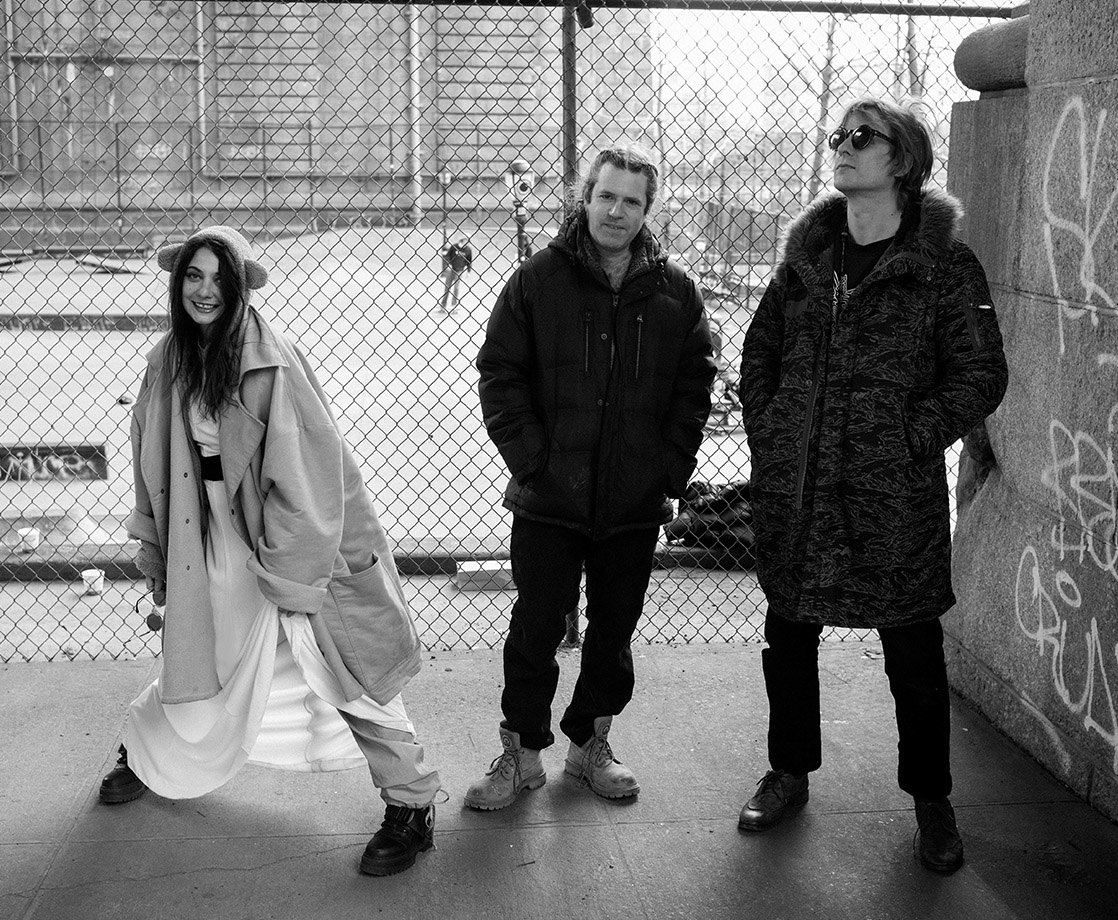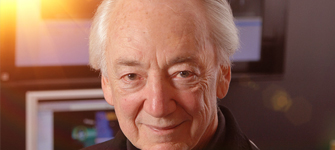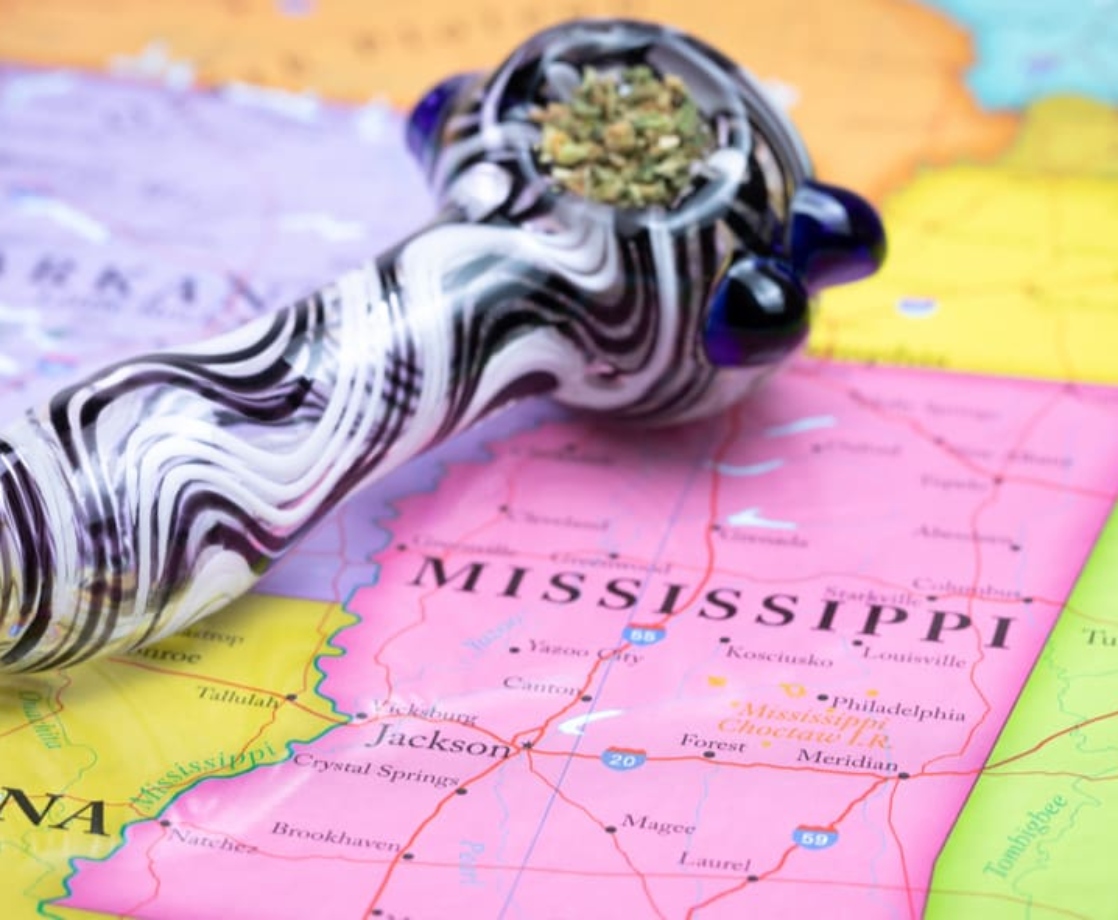Lead photo by Ari Macropolis, courtesy of 4AD
Hearing Gang Gang Dance return after a seven year hiatus is very comforting. Before the NYC group released Kazuashita in late June, the last we'd heard from the longstanding experimental psych-tronica crew was 2011's phenomenal Eye Contact, their most acclaimed album and first on revered label 4AD. Vocalist Lizzi Bougatsos' extraterrestrial siren songs, keyboard wiz Brian DeGraw's bugged-out textures, and the full group's unyielding percussive pulse were fixtures in the mid-to-late 2000s music blogosphere, and the band was sorely missed in the interminable interim between GGD's fifth and sixth albums.
Kazuashita brings their bugged-out bliss back. It opens with a spiraling, robotic vocal roulade accessorized with space-dust synths, which then crescendos into the staccato pitter-pattering that kicks off "J-TREE," a stunning pre-release single. Throughout the seamless 42-minute listen, sensual worldbeats abound, Bougatsos vocals reverberate cavernously, and trippiness pervades every waveform. Time, in many ways, has not eroded the GGD toolkit.
But seven years spent staring at our phones, allowing our earspaces to be curated, and witnessing shocking headlines all bleed together may make Kazuashita seem more familiar than it is to its creators. The Gang Gang Dance of old was a wilder, more improvisational, more cooperative, and a less political enterprise. With varying degrees of obviousness, the new album sheds each of those reputations.
The newfound chillness does jump out a bit. Bygone Gang Gang Dance shows were barely-controlled chaos, the music always threatening to unhinge from itself; Kazuashita plays more like a xanned-out DJ set, at least by the band's standards. Textures are less abrasive, and rhythms more locked-in. The album's political bent is also apparent, if not in Bougatsos' only occasionally-comprehensible vocals, then certainly three-quarters of the way through "J-TREE," when GGD deploy a sample from a viral video shot at 2016's Standing Rock protests.
The other major changes in the band's operating procedures are less conspicuous. It wasn't until we hopped on the phone with DeGraw that it became clear that GGD fundamentally changed the way the group members collaborated, composed, and conceived thematic visions in the prolonged run-up to Kazuashita. MERRY JANE spoke with the founding member about his more involved role on Kazuashita, his increased use of shoegaze textures, and his vision for the album as a dreamlike respite from a chaotic world.

MERRY JANE: It's been seven years between the previous Gang Gang Dance album and now. I know you did your solo album a few years back, but were there any other factors that played into the decision to take such a long break from the band?
Brian DeGraw: Nothing too major, just a general feeling of needing a break. I think we were touring a little more than we wanted to toward the end of the last record cycle. Also, I moved away up into the mountains up near Woodstock. That had a little bit to do with it as well. We weren't living in the city together for a while, so it made it a lot harder to play. But yeah, nothing really dramatic. Time passed more quickly than we had noticed.
How did the first conversations about this new record go when you were starting up, writing the music for it?
Probably three years ago, we met up at Lizzi's house and decided that maybe it was time to do something. After we decided that, we kind of sat around another year and didn't do anything. I mean, I started writing a little. I started writing things on my own, programming stuff on the sequencer, but it was a very slow-moving process to get the gears to start turning again. It took us a year to really even start after making that decision. Then two years of slowly working on it here and there.
Since it took quite a while to do that, did your vision for the record change over time?
I wouldn't say it changed; it ended up being very close to how I imagined it. I think the major transformation of the whole thing took place in the sequencing process at the end, but that's kind of always the case. Just molding all these pieces into one more complete piece of music, you know? But the results of the record were pretty close to what we initially discussed making.
What were some of those guiding visions for the record?
We talked about making something that was less about the drums. Normally we're all about rhythms and drums and everyone playing percussion — that's always the root of where we start. We talked about making something more melodically-based, more expansive, and maybe a little less spastic. Just more about mood and patience and less about being crazy out-there.
Did the band being all spread apart have much impact on the way that it was either written or conceived?
Yeah, it made a big difference because we've never made a record where anyone had written anything beforehand. It's always about being in the room together, improvising and then figuring out what to use out of that and how those improvisations can look and could take some sort of form. Since we didn't even have a rehearsal space, it was the first time that I, or anyone, went into the studio with some things already prepared. I was writing a lot when I was upstate, just making skeletal ideas and almost all of those became the record. So it was very different in that sense.
I feel like most people would say that improvisation is a more daunting task than writing their own stuff and coming prepared like that. Did you find the latter to be more of a challenge?
I mean, it was the only option so I don't really know. It was what was available to me because we didn't have access to each other as much, so I just did it. I didn't really think about whether it was the right or wrong thing to do. It was just what was there. I enjoyed it and I'm happy that it happened that way, because it was a different process and I think that's a good thing. I don't like the idea of getting stuck in the same working process every record. We've kind of done that for our whole existence so it was nice to jump out of that. It did inspire me to explore that [method] a little more in the future, too.
Was the decision to produce the album yourself — with additional production from Jorge Elbrecht — made because you were the main force in writing the material?
Yeah, it was a rough time, in the sense that everyone was going through their own personal issues in life, and it just wasn't as collaborative a record as our others. I had written a lot of it and was driving it in a certain direction on my own, and I'm also the only one who knows how to operate Pro Tools. Sometimes it comes down to me sitting at the computer and no one else really knowing how to do that, so a lot of times I end up getting deeper into the production than maybe I want to. It was just a pretty different process altogether. But I would say that I definitely was more of a driving force than usual on this record.
When did the album's lyrical and political themes start emerging? For example, the Dakota Access Pipeline protest footage that you sampled wasn't happening when you first convened three years ago.
So we did the record in four different studios — five actually, if you include home studio situations. It wasn't until the third studio, which was later into the process, that that element started to come into the record. I'm bad with dates and timelines, but whatever time that was, was when it hit us in the face — all the stuff that's going on in the world, the new president and all. It was almost impossible to not have that bleed into the process. When we started, I don't remember that feeling in the air at all; I don't remember feeling that blanket of insanity over the whole world. But by the time we finished, it was definitely there.
With that sample from Standing Rock, was that just the latest in a spree of fucked up things going on in the country at the time of recording, or was there something specifically about that issue that was important to the band?
We were watching and following a lot of footage from the protests. Lizzi actually had tried to get herself out there to help out in the winter, but she couldn't find the money to do it. She was really broken up about the whole thing in general, but also the fact that she couldn't make it there to help. I think bringing that specific thing into that song was also her way of addressing it in any way that she could even without having been there. I think she really needed that to be on the record for them and for her, too.
Are any of the issues touched on by that protest referenced in other songs in the album? Is that an overarching theme or is it more of an isolated thing?
I think it's more just that song. But in general, the record is sort of meant to be a journey through the chaos of the world at large right now. That song is a much more direct example because it's obvious what the clip is from and what's being addressed, but in general I like to think of the record as more of a dream state kind of journey through all of this — hopefully not in a dark way. It's meant to be observational but also leaning more towards hope and faith rather than anger or despair.
Yeah, I was going to say, it's interesting to hear you use the word "chaos" to describe Kazuashita when you're also talking about how it's a little less wild than the other albums.
I mean the chaos of the world, not of our world. I think that's also a reason why the record sounds the way it does. It's a lot more chilled out than most of our records, and I think that's in opposition to that chaos of the world. When things are politically fucked up in the world, in the past there's been this idea that the way you react to that is to form a punk band, go crazy, and make hardcore. That's great, but for me it's more about combating the chaos with a less chaotic voice, trying to contribute something that's calming instead of piling more aggression on top of their aggression.
You were talking before about the sequencing work that happened at the end of the production process. This album seems like more of a seamless, continuous cycle than your previous albums. What sparked that idea?
Well, we've always tried to make seamless records but yeah, we really meant this one in particular to be listened to as one 42-minute piece of music rather than individual songs. We compromised by making it single-friendly, where it was possible to pull out things that could be called songs just on their own. That was also something that we decided much later into it, because there was a point in one of the sessions where we were thinking that we were going to make the record this four-sided, one song per side kind of thing. You know, just completely abandoning any aspect of single songs and just making these super expansive, four full compositions and just Roman numeral'ing them one through four. We had all these things that we really liked that were 12 to 15 minute stretches of music. We were happy with them being that way and didn't really want to touch them. But then after that session, we sort of got guided into making compromises through our label and our manager and ourselves. I think what remains of that is maybe what you're talking about.
Were those four originally-planned songs shortened into songs that appear on the album or kind of more split up into multiple tracks?
The title track comes to mind. That's still a pretty long song on the record, but initially it was around 15 minutes of just looping that didn't really have any changes or anything. It was just this loop that we could listen to for 15 or 20 minutes and still not want it to end. But then we shaved that one down and it started make more sense as a slightly composed song with changes and stuff. The last song on the record was initially really long as well, but I think of a lot of the other ones got abandoned once we decided to make the songs a little more concise.
When you were writing this did you find yourself looking for or touching on any new inspirations that you hadn't really referenced on your previous albums?
Yeah, I don't know how apparent it is but I definitely have always been into, for lack of a better word, shoegaze kind of stuff. I love a lot of the sounds that happen in that genre of music. There were a couple things we've done in the past that touched on that, but I feel like this record's the closest we've ever been to bringing those in a little more. Even just in the approach, even if it doesn't end up sounding like [shoegaze], just focusing a little more on lush and dreamy qualities — things that feel breezier or something. In the past, a lot of the music we made was very much not about that. It was more about rough angles.
I think the last question I have is just about the cover photo. I live in Oregon and there's a lot of similar rock formations out in the ocean—
Yeah, my friend David took that photograph off the coast of Oregon. Those are the perfect rocks. They're called The Needles. Have you heard of that?
Yeah, I've been there a few times. Another association I made with the photo is the red tint — last summer we had a lot of forest fires up here, and the sky had that same eerie, unnatural hue. Beauty within the chaos is what I got from the photo. Is that kind of what you were aiming for?
Yeah. I liked the way that image addressed this blurry line between the end of the world and the dawn of a new world. That's was very much how I feel about the record. It's what I was talking about before, this dreamlike journey through all this chaos. You can either look at that as a dark, depressing thing, or if you take one more step over a certain line, then it becomes more of a hopeful thing. But I like that it's teetering on the edge. That image is sort of perfect in that sense. A lot of people I talk to see it as this very apocalyptic, "day after" kind of thing, and then a lot of people see it as this beautiful new morning. I'm also there, like I'm right on the line with it.
Purchase Gang Gang Dance's 'Kazuashita' from the 4AD store.
Follow Patrick Lyons on Twitter.











